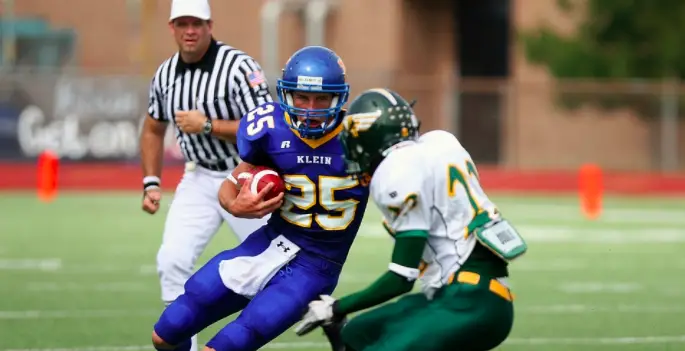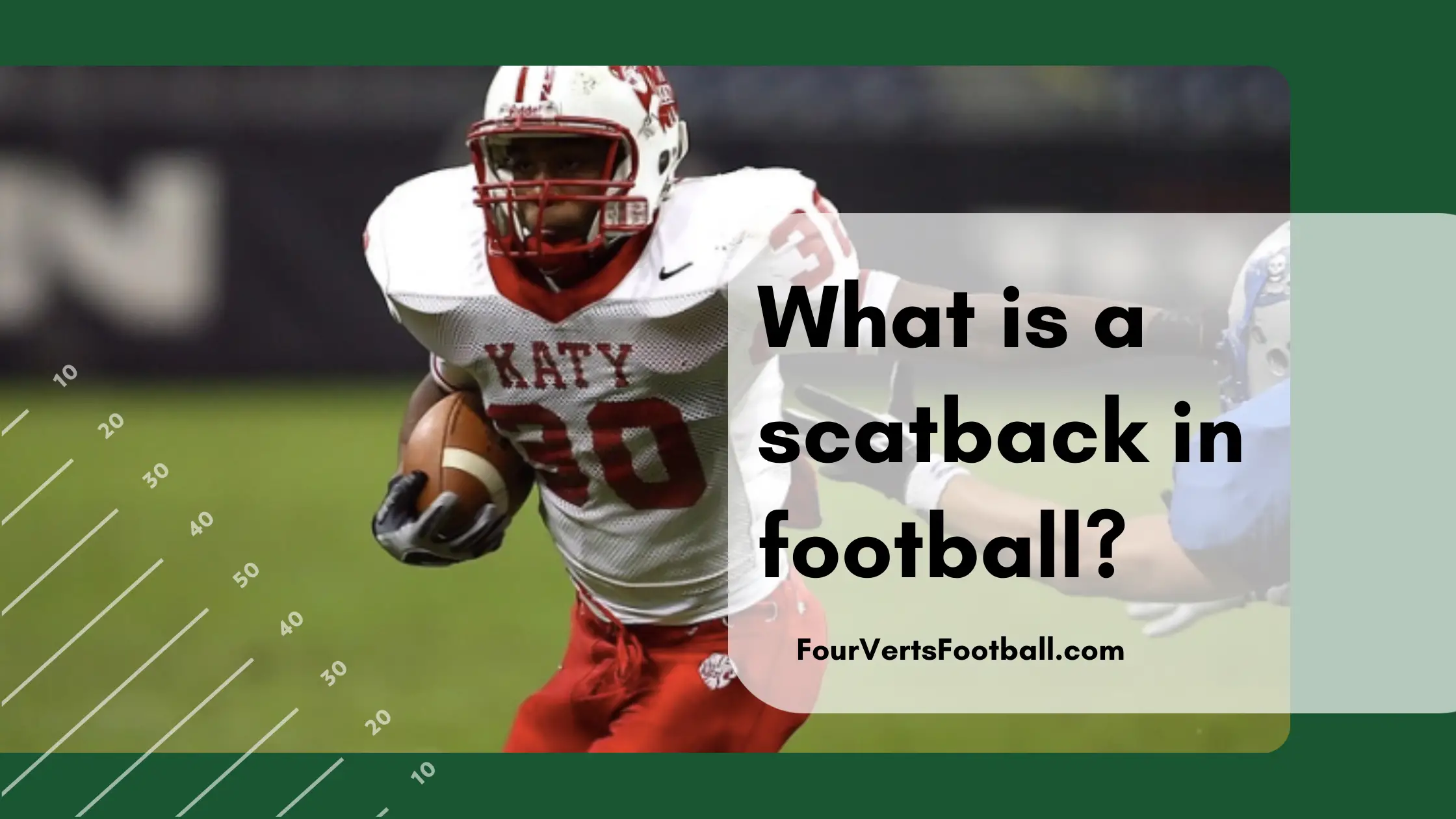A scatback in football refers to a running back that beats defenders using their elusiveness and speed. Scatbacks typically feature smaller builds than a traditional running back.
These sorts of running backs rarely break tackles and often run to the outside as opposed to in between the tackles.
Scatbacks also tend to be more proficient at catching the ball than a power back. For this reason, you will find scatbacks are more likely to be on the field in third-down situations.
The best running backs will be able to play all three downs due to their ability to catch the ball and run it effectively.
Pros And Cons Of Scatbacks
Now that you know what a scatback is in football it’s time we break down what they can do for your football team.
Pros
Breakaway Speed
Scatbacks are much more likely to have breakaway speed when compared to most running backs. This means their top speed gives them the ability to break off long touchdown runs.
Having breakaway speed is a very important trait to have especially at the NFL level.
Elusiveness
We have already touched on the fact that these runningbacks have an incredibly ability to avoid contact. Above all else scatbacks are known for their elusiveness and agility similar to a slot receiver. When you see a running back make a defender jump in the wrong direction you are likely watching a scatback.

Receiving Ability
The receiving ability is another great benefit of a scatback. This is the sort of trait that ensures that these players get onto the field. Scatbacks are much more consistent than other running backs when it comes to catching the ball. This makes third and longs situations a great opportunity for scatbacks.
A great example of this would be a scatback like Giovani Bernard. Despite not being the starter he has enjoyed a long career as scatback due to his ability to work as a receiver on third downs for the Bengals.
Cons
Breaking Tackles
Due to their smaller stature, it is difficult for scatbacks to consistently make tackles. In fact, many scatbacks struggle to break arm tackles, something a power back would easily run right through.
This makes it more difficult for these backs to run in between the tackles.
Pass Blocking
Though it is not always the case scatbacks can have some difficulty pass blocking. This is again due to their smaller size. That being said many of the best scatbacks have found their way around this issue with technique. This is important because it will allow them to block on passing downs when they are not running a route.
Best NFL Scatbacks Of All Time
I am not getting into ranking these runningbacks specifically but here are several of the top scatbacks of all time. This does not mean this is a list of best running backs. As there are plenty of greats that were jsut too physical to be considered scat backs.
Barry Sanders is an easy selection for this list because he is certainly the most elusive running back of all time. His ability to make a man miss made him a truly incredible football player.
Lesean Mccoy is another great example of a true scatback. Just by the way Lesean held the ball you could tell he was the sort of player that wasn’t planning on getting hit. “Shady” Mccoy had an incredible skill when it came to getting past defenders without them even touching him.
Reggie Bush is a great scatback because he played the role so well. He was never known as a three-down back but he certainly did his job as a scatback. He also returned punts and played special teams a common trait for scatbacks early in their careers.
Chris Johnson is one of the few NFL players to ever rush for 2000 yards and he did it without breaking too many tackles. His incredible speed allowed him to break off numerous massive runs throughout his career.
What Other Types Of Running Backs Are There In Football?
Now that you have an understanding of what a scatback is in football you may be wondering what other styles of rbs exist in this sport.
Power Back
The power back is a dying breed of running back and is essentially the polar opposite of a scatback. A power back in football is a large heavy running back that uses his strength and size to pick up yards against the defense.
This type of running back is especially useful in short-yardage situations. Their large size means these running backs rarely run for negative yards.
Their lack of top-end speed means they do not often break off long runs. These players are often able to break tackles and carry defenders for several yards after contact is made.
These players tend to be less of a threat in the receiving game than most running backs. For this reason, they are usually used on first and second down but rarely on the third.
Receiving Back
A receiving back is a style of running back that is known more for catching the ball than running with it. A receiving back is almost never the starting running back on the roster.
Instead, this back comes in when the team needs to pass the football. In most cases, this is going to be third down. Since these backs are primarily used in passing situations they are proficient in receiving the ball as well as in pass protection.
Oftentimes these running backs will be tasked with helping in pass protection when the quarterback is facing pressure.
These backs also tend to get a lot of playing time during the two-minute drill. Due to the fact that a two minute usually only features passing plays these running backs will almost always be on the field.
Three Down Back
A three-down back in football is a running back that has the skill set to do all the jobs a running back is required to do.
These players are effective in short-yardage, they can catch the ball, they have breakaway speed, and they are able to help in pass protection.
These running backs are quite rare and are the most valuable type of running back you can have on your football team.
The reason that these players are referred to as a three-down back is that they can play in all three downs. Including the run-heavy first and second downs as well as the receiving role on third down.
That’s all for scatbacks in football check our guides about feature backs or the extra large goal line backs.

